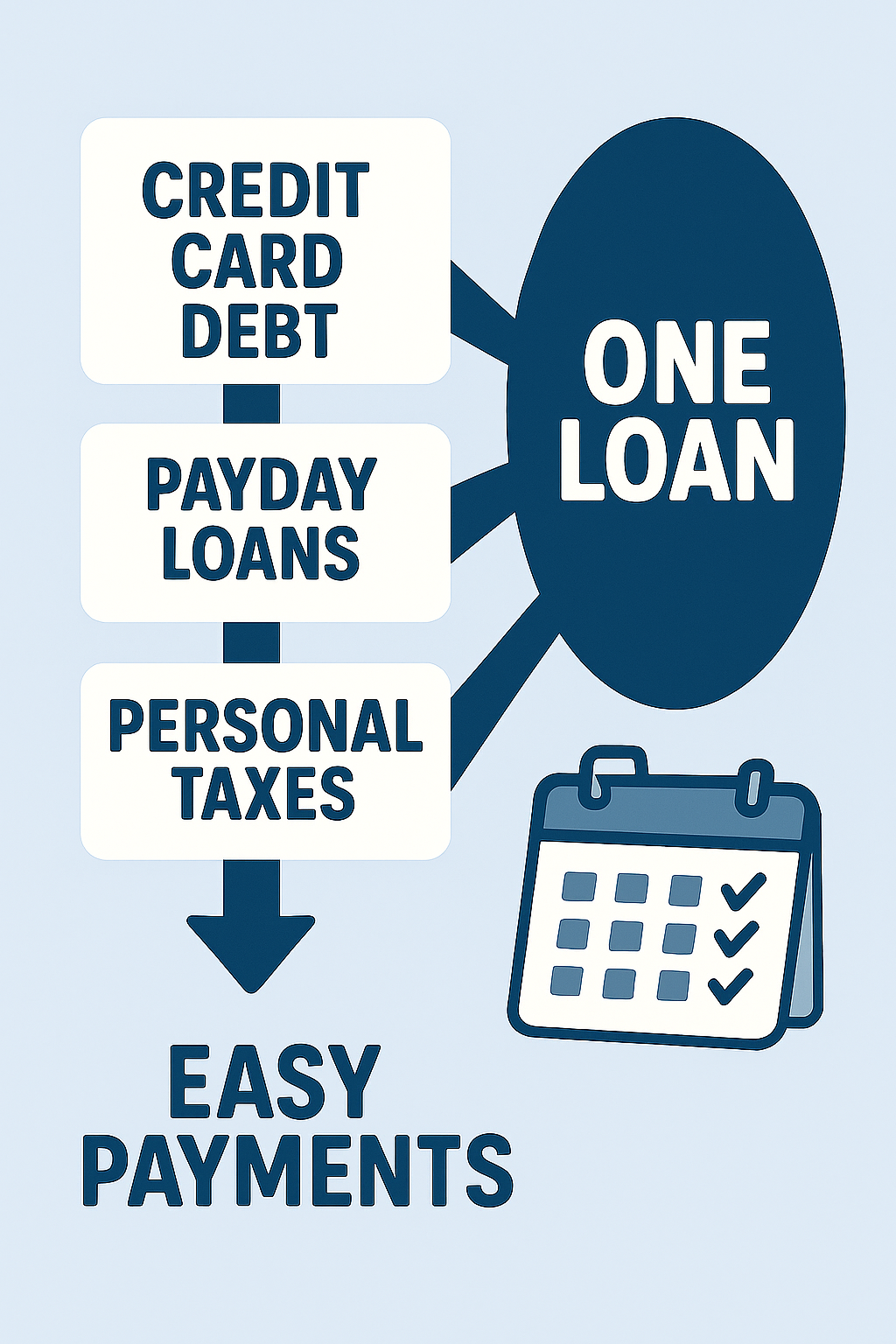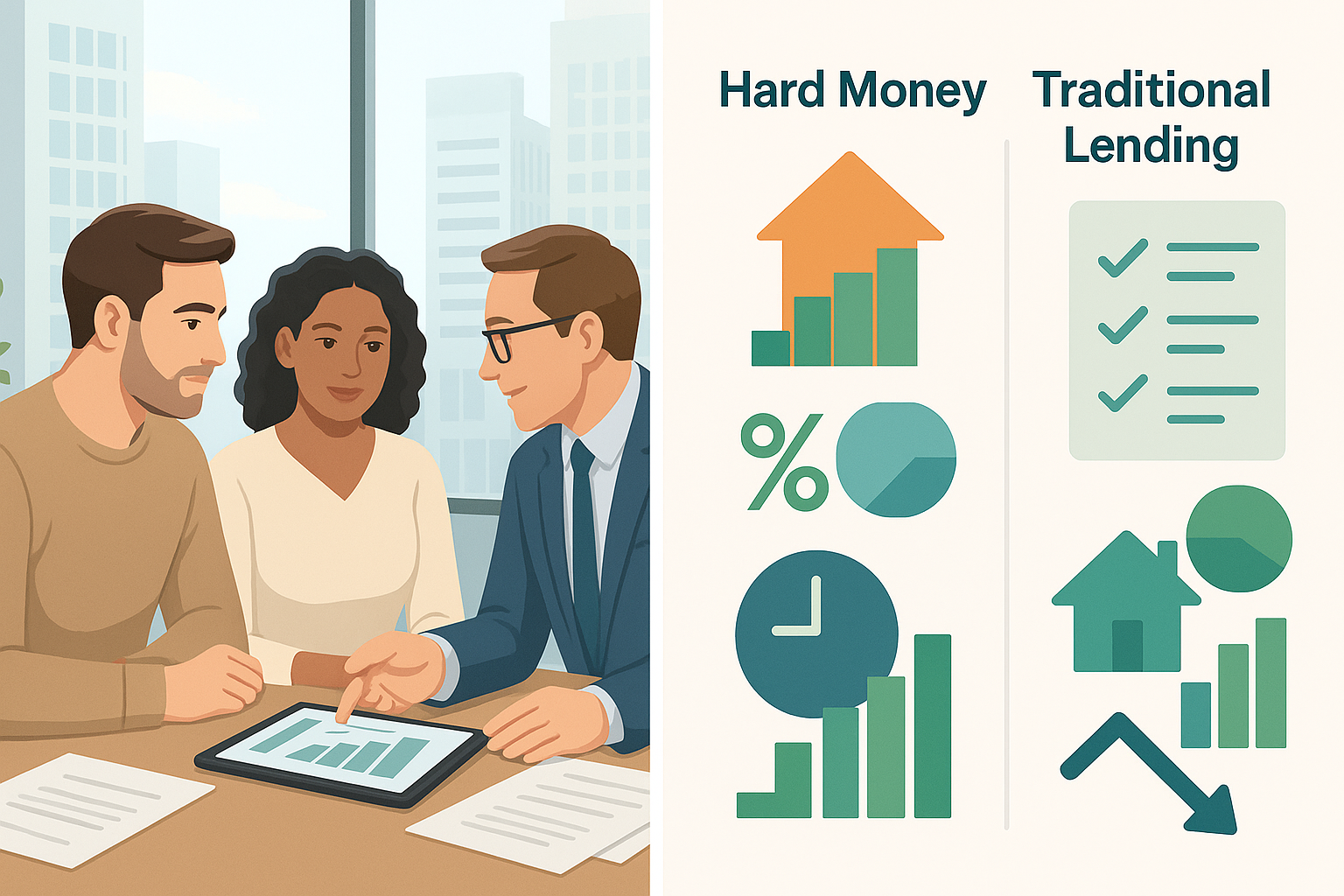For many Ontario homeowners, the equity in their home is more than just a number — it’s an opportunity. Whether it’s tackling major repairs, paying off high-interest debt, or helping children with tuition, getting a home equity loan in Ontario is one of the most practical ways to unlock financial flexibility.
At the same time, Canada’s wealth gap is widening. According to Statistics Canada’s July 2025 report, the wealthiest 20% of households now control almost two-thirds of the nation’s net worth, averaging $3.3 million each. By comparison, the bottom 40% hold just 3.3% of net worth, with an average of $85,700. With real estate values declining by 1.4% over the past year, many families are seeing their home equity shrink, which makes it even more important to manage and use equity strategically.
This guide will walk you through what a home equity loan is, why Ontarians use it, how it compares to a HELOC, and what to expect when applying.
Table of Contents
ToggleWhat Is a Home Equity Loan?
A home equity loan is a type of second mortgage that allows you to borrow a lump sum of money using your home as collateral.
-
Equity = Home value – Mortgage balance
-
Example: If your home is worth $800,000 and you owe $400,000 on your mortgage, you have $400,000 in equity.
By getting a home equity loan in Ontario, you receive a lump sum upfront and repay it with fixed monthly payments (principal + interest). This predictability makes budgeting easier than with credit cards or unsecured loans.
Why Homeowners in Ontario Use Home Equity
While a home equity loan can be used for almost any purpose, three key reasons stand out for Ontario homeowners in 2025.
1. Financing Home Repairs and Renovations
Homes in Ontario often require expensive upgrades, from roof repairs to kitchen remodels. Instead of depleting savings, homeowners turn to equity to cover these costs.
Example: A family in Oshawa used $70,000 from their equity loan to replace their roof and modernize their kitchen, increasing both comfort and property value.
2. Debt Consolidation
High-interest credit card and payday loan debt can be overwhelming. By getting a home equity loan in Ontario, many homeowners consolidate debts into one lower-interest payment, improving their monthly cash flow and reducing stress.
3. Covering Tuition and Education Costs
With Ontario’s rising tuition fees, helping children through post-secondary education is a major financial commitment. A home equity loan offers a cost-effective way to fund tuition without relying on high-interest student loans.
Home Equity Loan vs. HELOC: Key Differences
Some homeowners debate whether to apply for a home equity loan or a home equity line of credit (HELOC). Here’s how they compare:
| Feature | Home Equity Loan | HELOC |
|---|---|---|
| Type of Credit | Lump sum, fixed-term loan | Revolving line of credit |
| Interest Rate | Fixed | Variable (linked to Bank of Canada prime) |
| Repayment | Fixed monthly installments | Flexible (interest-only or principal + interest) |
| Best For | One-time expenses (renos, debt, tuition) | Ongoing expenses (business, education, emergencies) |
| Predictability | Very predictable | Less predictable due to rate changes |
👉 For a deeper explanation of equity itself, visit our guide: What is Home Equity and How Does It Work.
How Much Can You Borrow in Ontario?
Most lenders allow homeowners to borrow up to 80% of their home’s appraised value (combined mortgage + home equity loan).
Example Calculation:
-
Home value: $700,000
-
80% loan-to-value: $560,000
-
Current mortgage: $350,000
-
Available equity: $210,000
By getting a home equity loan in Ontario, the actual amount you qualify for depends on your credit, income, and lender requirements. Private lenders often provide more flexible solutions if you have bad credit or self-employed income.

The Approval Process for Home Equity Loans
When you apply, lenders follow several key steps:
-
Appraisal – A professional determines your home’s current value.
-
Credit Check – Credit history affects approval and rates, though equity is the main factor.
-
Income Review – Lenders assess debt-to-income ratios to ensure repayment ability.
-
Documentation – You’ll need ID, a property tax bill, mortgage statements, and proof of income.
-
Funding – Once approved, funds are deposited as a lump sum, often within 5–10 business days.
Benefits of Getting a Home Equity Loan in Ontario
-
Lower interest rates than personal loans or credit cards.
-
Predictable fixed payments for easier budgeting.
-
Flexibility – funds can be used for renovations, debt, tuition, or emergencies.
-
Potential credit improvement through responsible repayment.
-
Property value growth if used for home improvements.
Risks to Consider
While getting a home equity loan in Ontario offers many advantages, it’s important to consider potential downsides:
-
Your home is collateral – missed payments can lead to a power of sale.
-
Interest charges over time may be substantial.
-
Lender fees may include appraisal, legal, and administrative costs.
-
Housing market fluctuations may reduce available equity.
FAQ: Getting a Home Equity Loan in Ontario
Q1: How much equity do I need to qualify?
Usually, at least 15–20% equity is required to get approved.
Q2: Can I get a home equity loan with bad credit?
Yes. Many private lenders in Ontario approve loans based on equity rather than just credit score.
Q3: Is the interest tax-deductible?
In Canada, interest is deductible only if funds are used for investment income purposes. Always consult a tax professional.
Q4: What’s the difference between a second mortgage and a home equity loan?
They’re often the same thing — both mean borrowing a lump sum against your home’s equity.
Q5: How long does it take to get funding?
Private lenders can release funds in as little as 5–10 business days once appraisal and documents are complete.
Ready to Unlock Your Home Equity?
At LendToday, we specialize in helping Ontario homeowners access fast, reliable financing. Whether it’s repairs, debt consolidation, or tuition, getting a home equity loan in Ontario can provide the solution you need.
But in today’s market, where the wealth gap is widening and real estate values have recently declined, it’s more important than ever to use your home equity wisely. Before borrowing, take time to:
-
Plan an Exit Strategy – Know how you will repay the loan, whether through income, refinancing, or asset sales.
-
Understand Credit Impact – Timely repayment can boost your credit, while missed payments can quickly erode it.
-
Consider Long-Term Goals – Ask if borrowing aligns with your financial future: are you aiming for debt freedom, retirement savings, or education funding?
-
Review Lifestyle Expenses – Ensure that adding a new loan payment won’t stretch your household budget too thin.
For families outside the top wealth brackets, smart borrowing decisions can make the difference between building stability and falling further behind. By carefully managing equity, you can strengthen your finances and protect your home’s role as your most valuable asset.
🔑 Key Takeaway
While the wealthiest Canadians continue to hold the majority of the country’s net worth, many Ontario families rely on their homes as their greatest financial asset. By getting a home equity loan in Ontario with a clear repayment strategy, mindful budgeting, and long-term goals in mind, homeowners can protect their financial stability and avoid slipping further behind in today’s widening wealth gap.
- Mortgage Co-Signer vs Guarantor in Canada: Expert Playbook to a Smarter Approval in 2025 - September 24, 2025
- 7 Powerful Steps to Rent-to-Own Success: How to Qualify for a Mortgage and Exercise Your Option to Purchase - September 22, 2025
- Refinance Your Home Should be 1st Choice to Consolidate Debt: A Smarter Path Than Consumer Proposals or Bankruptcy - September 20, 2025






